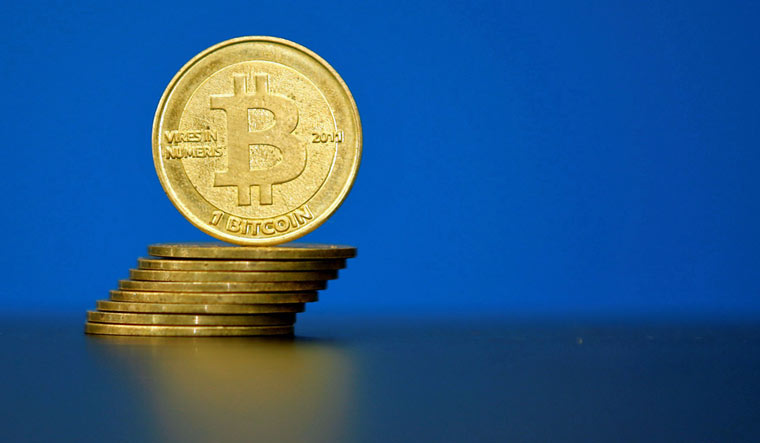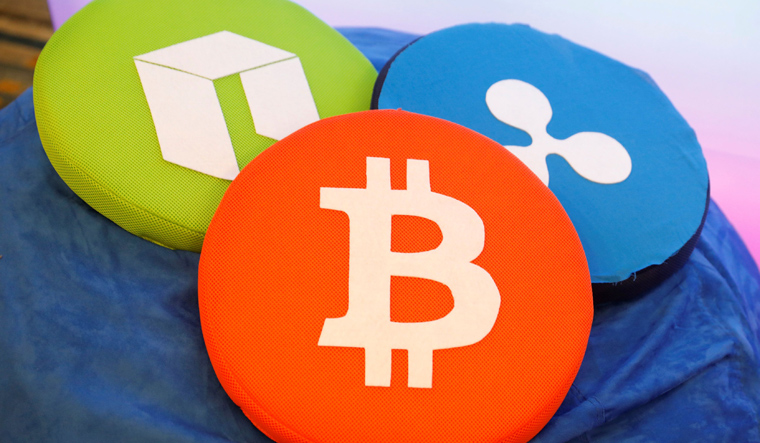The Sony Walkman, the earliest prototype of which came out in the early 1980s, is considered an invention that defined an entire generation. For the first time, Pink Floyd t-shirt wearing, Led Zeppelin-tattooed rockers crooned along to Janet Jackson without public ignominy. By the 1990s, even the baby boomers listened, under the veil of secrecy of their ear phones, to the “touchy-feely” Nirvana, accelerating the demise of the then wildly popular toxic machismo of the hair metal bands. By 2019, the humble soundbox with an extension cord had spurred the growth of a multi-billion podcast industry, where Google and Amazon fought for slices, and internet’s biggest sensation in a decade—Joe Rogan.
On October 31, 2008, a person who identified as Satoshi Nakamoto emailed an internet forum about a new electronic cash system that he designed, “fully peer-to-peer, with no trusted third party”. There would be no centralised authority—no banks, no governments; in essence, a fully decentralised system where trust could be established through cryptography. Slowly, the currency—now popular as bitcoin—caught on. Bitcoins had to be “mined”. In the simplest terms, it was the process by which participant systems kept system functional by investing in computing power. The more you invested, the more you received the incentive—bitcoins. First, it appeared in the dark web, as a secure, anonymous mode of payment for prostitutes, hitmen and cocaine. Then, it became mainstream, a siren song for speculators, as its prices rose to dizzying heights and crashed just as spectacularly (at the end of 2017, the price of one bitcoin was around $20,000). Bitcoin was indeed revolutionary, sparking thousands of other innovative cryptocurrencies—Ethereum, Ripple—and an equal number of doomed-to-fail “shitcoins” with zero intrinsic value. On August 16, an announcement flashed across Reddit, supplemented by media reports and press releases from a PR firm allegedly representing Nakamoto—on August 19, the reclusive genius, who reportedly holds more than $20 billion dollars of bitcoin, will finally reveal his identity.
In the first of three parts of what was claimed was a huge revelation, he spoke about the late Hal Finney, a well-known name in the cryptocurrency circuits, as his closest ally and mentor. He did not reveal his name, but said "nickname at home" was Shaikho. "It was derived from Mughal Emperor Jahangir’s nickname Shekhu that was given to him by his mother, wife of Akbar the Great. In 1607, Jahangir founded what is now the city of Shekhupura in the Pakistani province of Punjab," he wrote. The name bitcoin was an acronym for Bank of CredIT and COmmerce INternational, he wrote. However, his big "confessions" have happened through a Wordpress blog, hardly conclusive. The only way to properly verify his identity is for him to use a digitally encrypted signature originating from the private keys known to belong to Nakamoto. The other two parts of his reveal will happen by Tuesday; then, a definite conclusion can be drawn. But, the earliest signs are far from promising.

Whatever the case, the power of the Nakamoto myth remains unsullied, and will do so in the foreseeable future. Such was the impact of the bitcoin technology that he created. As it stands now, two-thirds of the world nations recognise cryptocurrencies one way or the other. Blockchain—the underlying architecture of cryptocurrencies—which are nothing but decentralised ledgers which offer complete immunity from hackers and immutability of records, are increasingly adapted across the world. Estonia has a national database of medical records operating on blockchain. More than 12 states in India have adopted blockchain for storing land records, health documents, identity and more. Cryptocurrencies received a major boost when tech giant Facebook announced the launch of its own virtual currency Libra, along with companies like Uber, Lyft, VISA and Mastercard. The initiative has the potential to allow more than a billion "unbanked" people around the world access to online commerce and financial services, said Libra Association head of policy and communications Dante Disparte. Unlike bitcoin, which is volatile and speculators’ gold, Libra is a “stable coin”—that is, real world currency used to buy Libra will go into a reserve backing the digital money, the value of which will mirror stable currencies such as the US dollar and the euro. All these, built upon the preliminary technology envisioned by Nakamato.

Over the years, there have been many attempts to put a face to Nakamoto's name. A series of misidentifications of his identity happened over the years. The latest speculated 'Nakamoto' was billionaire Elon Musk, after the revelation of a former intern in his technology corporation—SpaceX. But, Musk debunked that rumour saying that neither he is the 'creator' nor he could remember where he kept his cryptocurrency. Satoshi means “wisdom” or “reason”, and Nakamota means “central source”. Initially, Nakamoto was believed to be a 36-year-old person from Japan. But, later, there were speculations that the name “Satoshi Nakamoto” is just a pseudonym and it is possible that “he” could be a “she” or “they”. Some even suggested (jokingly) that it could actually be a group of four technology companies where “sa” stands for Samsung, “toshi” for Toshiba, “naka” for Nakamichi and “moto” for Motorola.
In 2014, NewsWeek misidentified a 64-year-old Japanese American named Dorian Prentice Satoshi Nakamoto as the one behind bitcoin. Dorian denied this and the story has been deemed inaccurate. In 2015, Wired and Gizmodo published articles contenting that an Australian entrepreneur Craig Wright was Satoshi Nakamoto, based on anonymously sourced documents provided to them. Wright confirmed the claim, too, filing copyright claims over bitcoin. But he failed to provide sufficient evidences to support his claims. Then there were claims that the cryptocurrency was a creation of CIA. Their theory is based on the fact that “Satoshi Nakamoto” can roughly be translated as “Central Intelligence” in Japanese.
Then comes the larger question. Should we even care who he is? The latest reincarnation of Nakamoto, in his press release, has called for an ambitious “revamp of the entire bitcoin ecosystem” with a Tabula Rasa (literally meaning blank slate). How does he plan to make that happen, when some of the more elementary issues related to the blockchain network are still being worked out? The bitcoin network speed is extremely clunky—it could process four transactions per second, while in comparison VISA went over 4,000 transactions per second. Protocols like Lightning, which are in essence off-chain solutions to increase speed, are slowly gaining traction, but still need to be ironed out. Then there is the crippling consumption of energy, which was cited as one of the reasons China banned cryptocurrency mining in 2017. Iceland government said in 2018 that energy consumption at bitcoin mining data centres exceeded electricity consumption from homes put together. Add to that the fact that cryptocurrencies—courtesy its anonymity—is still viewed upon by large sections of the mainstream as a fringe element; the Subhash Garg committee constituted by the Indian government to study cryptocurrencies recommended that they be completely banned given their propensity to be used for “terror-funding and money laundering”. Credit where it is due, Nakamoto’s work forms the base of the cryptocurrency rush that we currently witness. But, the technology, as of now, teeters on the edge of an utter transformation. As the Dave Chappelle punchline goes, modern problems require modern solutions. Bringing in Charles Babbage to revolutionise a quantum computer might just not be the way to go.


